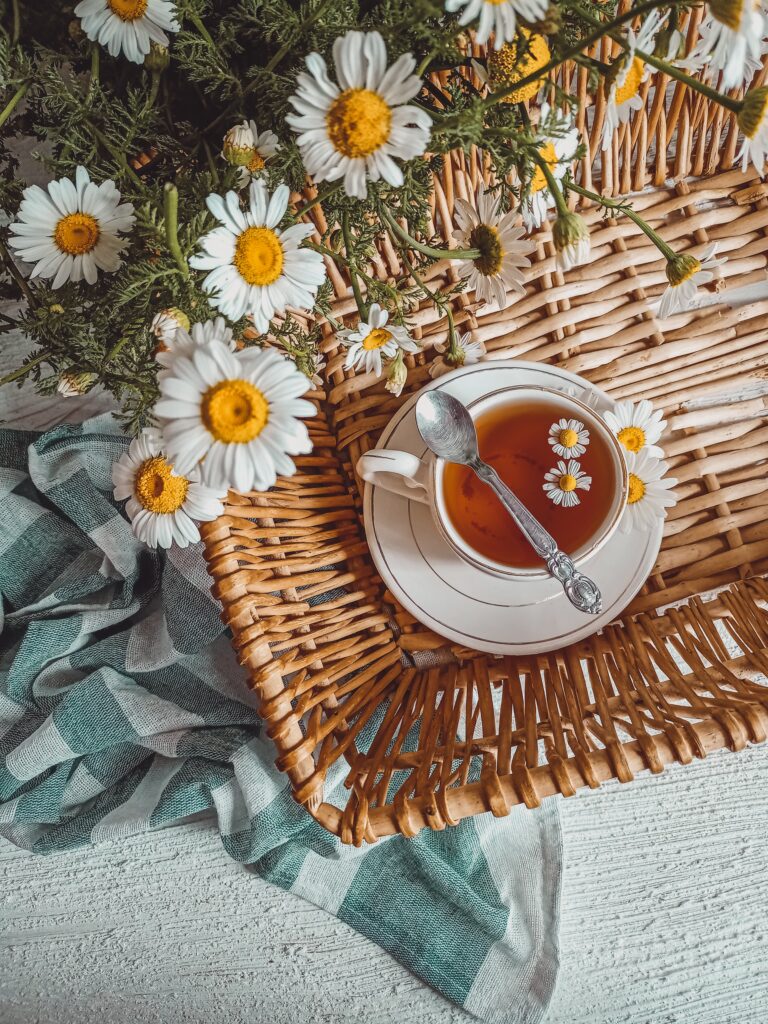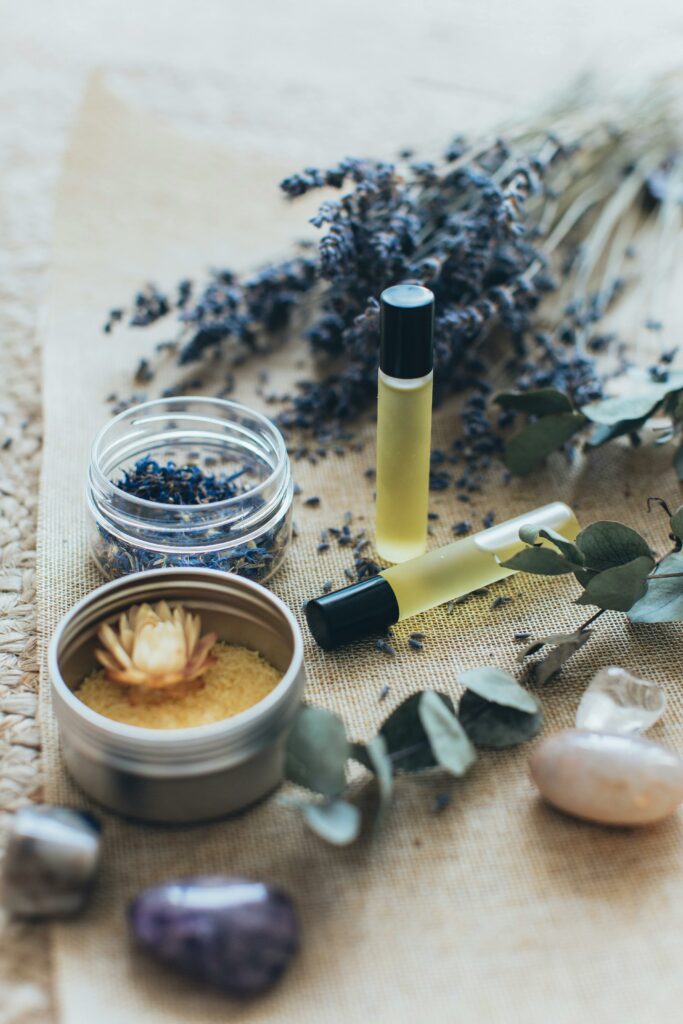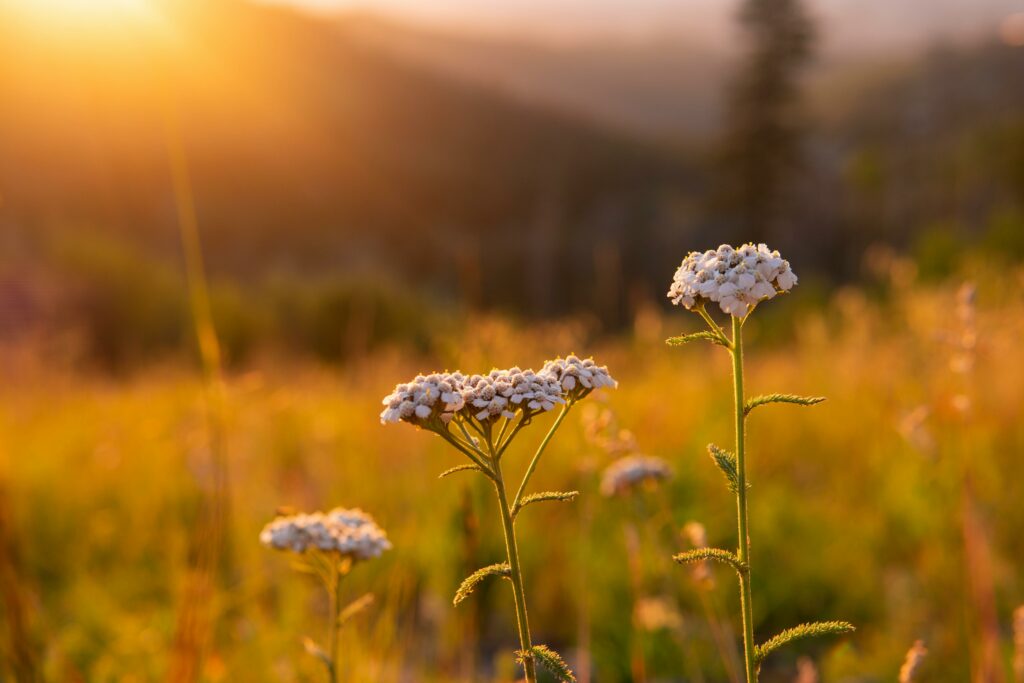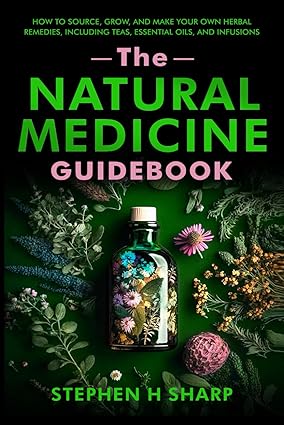Ever wonder why folks are diving into the world of herbal remedies? Well, picture this: you’re tired of the same old over-the-counter solutions that are packed full of chemicals and nasty side effects and you want to explore a more natural path to wellness. Learning about herbal remedies is like unlocking a treasure chest of ancient wisdom – these remedies have been around for ages. It’s all about discovering how everyday plants, herbs, and spices can be your own little pharmacy. Plus, there’s a certain charm in knowing you can whip up a homemade remedy right from your kitchen. Whether you’re into soothing teas, DIY salves, or just curious about what’s growing in your backyard, herbal remedies add a touch of nature to your well-being journey.


Tinctures
Tinctures are made by soaking herbs in alcohol for a period of time. They are generally stronger in their healing properties compared to infusions or decoctions. To create a tincture, start by filling a glass canning jar with herbs. I’ve found that using dried herbs works best, although some recipes call for fresh herbs. Fill the jar with enough alcohol to cover the herbs, shake well, and then store it in a dark and cool place for two to three weeks. After this waiting period, it’s time to strain the tincture. I place a cheesecloth over a large glass measuring cup (securing the cheesecloth with a rubber band to prevent shifting) and pour the contents of the jar through it. Once the liquid has strained through the cheesecloth, gather up the cloth and squeeze out any remaining moisture – that’s the good stuff. Store tinctures in glass amber bottles for up to 2 years, and don’t forget to label them!
Creams
Making a herbal cream involves combining a fat or an oil in an emulsion. Adding 1mL of Tea Tree essential oil to any cream to extend shelf life. Creams are made by melting 150g of emulsifying wax in a double boiler. Add 70g of glycerin or other oil, 80mL water, and 75g of fresh herbs. Let all that simmer for a minimum of 3 hours. After three hours, strain the mixture with a cheesecloth and stir slowly but regularly until the mixture cools and sets. Put the set cream into glass jars and store in the refrigerator for up to 3 months.

Ointments
Ointments are my favorite to make. Start by melting a 1:1 ratio of coconut oil and beeswax (you can put slightly more of the other if you like it more firm or soft – more beeswax will create a more firm ointment) in a double boiler, add the dried herb of choice and simmer for 2 hours. Strain & pour into jars!
YARROW
Yarrow is a creeping perennial with white flowers and finely divided leaves. It’s a native European plant and it has a long history as a medicinal wound healer. Many say yarrow is similar to German chamomile but yarrow has been neglected in terms of research compared to chamomile. According to the existing research, yarrow has been shown to be anti-inflammatory, anti-allergenic, and even anti-tumor properties. Studies have shown that yarrow dilates blood vessels, which would lower blood pressure.

Uses:
- Healing wounds
- Gynaecological herb (used to treat symptoms related to the menstrual cycle)
- Alleviating cold and flue symptoms
- Lowers blood pressure
- Improves weak digestion
Remedies:
#1 Cold Remedy – mix equal parts of chopped yarrow, peppermint, oregano and elderflower (dried or fresh). Infuse 1 tablespoon of the herbs with 150-200mL of water for 15 minutes. Strain and drink the liquid. Can repeat this up to 3 times per day if needed.
#2 Indigestion Tincture – fill the jar 3/4 full of yarrow, cover with alcohol, shake, and store for 2-3 weeks. Once the tincture is strained and in designated jars – take up to 20 drops morning and evening as needed.
#3 Overall Wellness Tea – add dried aerial parts of yarrow to a tea mug. Add any other flavorings or herbs you wish. Enjoy as a daily tea whenever you’d like!
GERMAN CHAMOMILE
German chamomile is a sweet, aromatic annual plant with beautiful white flowers. The seeds can easily be planted in the spring and grown by your average gardener. This is a familiar herb for tea drinkers, but the uses for German chamomile don’t stop with tea. A clinical trial was conducted and it was found that German chamomile was effective in reducing physical symptoms of menstrual pain as well as some of the emotional symptoms.
Uses:
- Improves digestive problems
- Improved relaxation and sleep
- Improves hay fever symptoms
- Sooths itchy skin
- Anti-inflammatory
Remedies:
#1 Insomnia Remedy – mix equal parts of German chamomile flower heads and lavender buds. Add 2-3 tablespoons of the dried herbs to 250mL of hot water. Infuse for 15 minutes and drink!
#2 Sore/Itchy Skin Cream – rub on desired area 3x daily.
#3 Irritable Bowel Tincture – For irritable bowel symptoms, take 1 teaspoon of the complete tincture with some water 3 times daily.
ECHINACEA
Echinacea, commonly known as coneflower, is a vibrant and hardy perennial herb celebrated for both its ornamental beauty and medicinal properties. With its striking, daisy-like blooms featuring prominent cone-shaped centers, Echinacea adds a burst of color to gardens, attracting pollinators like bees and butterflies. Beyond its aesthetic appeal, Echinacea is renowned for its immune-boosting qualities. Native to North America, this resilient herb has been traditionally used by indigenous peoples for centuries. Its roots, leaves, and flowers are often utilized in herbal remedies, believed to help fend off colds and support overall immune health. Echinacea’s popularity has soared in contemporary herbalism, finding its way into teas, tinctures, and supplements. Both the petals of the flower and the roots are used herbily. As you welcome Echinacea into your garden, you not only embrace a stunning floral display but also a natural ally in promoting wellness.
Uses:
- Alleviates toothache pain
- Soothes sore throats
- Boosts immune system
- Helps fight off colds
- Assists in viral and fungal infection treatment
- Allergy remedy
Remedies:
- Health Capsules – Powder the dry roots and add them to fillable capsules. Take up to three times daily when you’re exposed to any concerning sickness or when you begin to feel under the weather.
- Immune System Tea – Using a combination of the petals and roots, steep 3 tablespoons in hot water for 15-20 minutes, strain & enjoy!
- Chronic Infection Tincture – Using the dried root parts of echinacea, make a tincture. Take a tsp 1-2 times daily.
CALENDULA
With bright, golden-orange petals that mirror the warmth of the sun, Calendula is not just a feast for the eyes but a botanical powerhouse for holistic well-being.
This herb has long been cherished for its anti-inflammatory and skin-soothing properties. Calendula’s tender blooms are often harvested and transformed into healing salves, creams, and oils, offering a gentle touch for irritated skin, minor cuts, and abrasions. Sipping on a cup of Calendula tea is like inviting a ray of sunshine into your day, known for its potential to ease digestive discomfort and promote overall relaxation. Calendula is also a great companion plant as it attracts pollinators and repels some unwanted pests.

Uses:
- Minor cut treatment
- Rash or eczema treatment
- Liver cleansing
- Improves digestive issues
- Athletes foot treatment
- Minor burn and sunburn treatment
Remedies:
- Cleansing Tea – Use to cleanse the liver and gallbladder. Can even be used to treat fungal infections. Drink a cup of calendula infused tea up to 3 times daily.
- Infused Oil – Add a calendula to a jar and top with moisturizing oil, such as grapeseed or coconut. Can be used to treat inflamed skin or eczema.
- First Aid Ointments – Use for minor scrapes, burns, sunburns, even bites and stings!
- Tincture – A calendula tincture is said to help symptoms of eczema. Take 15-20 drops with water 3 times daily.
GOJI BERRY
Goji berries, also known as wolfberries, are vibrant red fruits bursting with antioxidants and nutrients. Hailing from Asia, these tiny superfoods are prized for supporting immune health and promoting vitality. Enjoy them dried as a snack, sprinkled on salads, or brewed into a refreshing tea. With a rich cultural history and ties to traditional Chinese medicine, goji berries are not just a flavorful addition to your diet but a delicious investment in your well-being. The polysaccharides in goji berries are even said to have anti-cancer properties. Avoid taking during pregnancy.
Uses:
- Said to be an Alzheimer’s preventative
- Mood booster
- Helps prevent macular degeneration
- Supports general eye health
- Helps reduce cold and flu symptoms
- Infection prevention
- Immune system booster
- Lowers blood pressure
- Reduce fever
Remedies:
- Eyesight Juice – Can be made by juicing fresh berries or boiling dried berries for 30 minutes. Drink 150 mL twice daily. (Of course drinking this juice will have numerous other health benefits, too)
- Cold Medicine Tincture – Take a teaspoon diluted with juice or water up to three times daily. Helps reduce fever and cough.
- Long Term Health Snack – By eating these fresh berries, you are contributing to your long term health, as well as possibly preventing and illness from taking over.
Once you dive into the world of herbal health & medicine, you’ll see that there are remedies for everything. There are hundreds of edible & safe plants that are used in herbal medicine – and many of them you can grow right in your backyard. Be sure to invest in a few books with remedy recipes included… because the internet may not be around forever.
Need herb seeds? Check out Seeds Now! With their diverse range of quality seeds, I’m sure you’ll find what you’re looking for.
**As always, this is not meant to replace medical advice. Do not self diagnose or attempt to treat serious self diagnosed illnesses. Please also speak to your doctor before attempting herbal treatment if you are on any prescription medication. This guide is also created with adult consumption in mind. Please do dosage research before providing any remedies to children**








